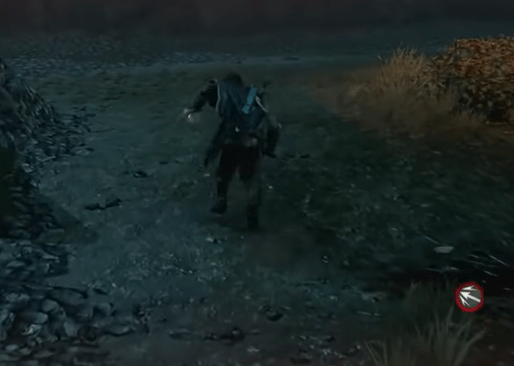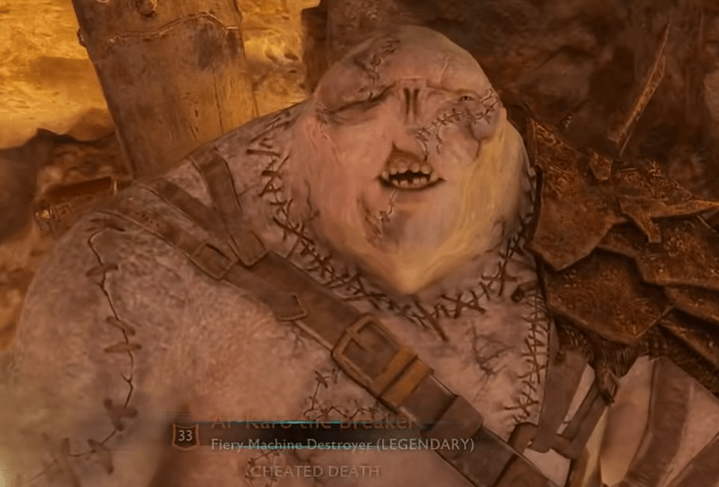 In February 2021, the US Patent Office (USPTO) granted Warner Brothers Interactive Entertainment’s (Warner) a US patent for the nemesis system implemented in the computer games Middle Earth: Shadow of Mordor and Middle Earth: Shadow of War (US Patent No. 10,926,179).
In February 2021, the US Patent Office (USPTO) granted Warner Brothers Interactive Entertainment’s (Warner) a US patent for the nemesis system implemented in the computer games Middle Earth: Shadow of Mordor and Middle Earth: Shadow of War (US Patent No. 10,926,179).
In this article we will explain what a patent is, how it protects computer games and what is the monopoly of the patent granted to Warner Brothers.
Patent law protection for computer games
Although patents have become common in the computer game industry, patent protection is a less common avenue compared to the protection granted to computer games by copyright law.
A patent provides protection for the idea underlying a registered technological invention through the right to prevent anyone else from using the invention registered as a patent. When it comes to computer games, a patent will allow its owner to prevent anyone from making any use of the protected idea underlying the game registered as a patent.
In order to win the protection of the patent laws for a computer game, the main points are that it must be shown that:
1. The mechanics of the computer game were unknown and had not been used before.
2. The mechanics of the computer game are not self-evident to the average professional in the field of computer games.
Registering a patent on a computer game will grant its owner exclusivity (monopoly) for a period of 20 years, but identifying unique features in a computer game may be very difficult, and the high costs of patent protection may prevent private individuals and small development companies from protecting their patent.
For additional information, you can refer to this article on Patent Registration for Computer Games or this article on Software Patent Drafting in Israel.
The Warner Brothers patent
As mentioned above, in February 2021, the US Patent Office (USPTO) granted the Warner company a US patent for the nemesis system from the computer games Middle Earth: Shadow of Mordor and Middle Earth: Shadow of War (US Patent No. 10,926,179).
The patent entitled: “Nemesis characters, nemesis forts, social vendettas and followers in computer games”, is intended to cover all aspects of the Nemesis system (enemy system) created by Monolith Productions.
This system was created to add game depth and narrative meaning to encounters with various characters (mainly orc bosses – NPC – non-player character). In such a way that every boss you meet remembers the current meeting and in the next meeting he will change his behavior according to the previous meeting. This behavior creates game depth and a feeling that it is not a railroading game but a game that learns and changes according to the actual actions of the player. Basically, the Nemesis system creates a story according to the player’s behavior.
The patent refers to a system that includes a number of NPCs present in the game, who first interact with the player character and remember their interaction with the player character. In the second interaction, this memory affects the appearance of the NPC, the behavior of the NPC and the hierarchy of the NPC among the other NPCs.
The monopoly of the patent (claim 1 in the patent) was defined as follows:
“1. A method comprising:
controlling, by a processor, game events in a computer-implemented game, the game events involving an avatar that is operated in response to input from a player, and a first non-player character that is controlled by the processor to respond to and automatically oppose avatars based on first character parameters defined in a computer memory;
detecting, by the processor, occurrence of a predefined one of the game events involving an interaction between the avatar and the first non-player character;
changing, by the processor, second character parameters defined in at least one of the computer memory or a second computer memory for control of a second non-player character in the game based on the detecting, wherein the second non-player character is controlled by the processor to respond to and automatically oppose avatars based on the second character parameters defined in the at least one of the computer memory or the second computer memory; and
outputting, to an output device, an indication of the second character parameters that are changed by the changing.”
For additional information you can refer to this article on How to Draft an Independent Claim?.
For example:
If Talion (player character) runs away from a fight with Zumug (orc boss),

The orc Zumug at the beginning of the next encounter with Talion will say: “Not letting you run this time!”

Or if Talion (the player character) defeats the orc Ar-Karo and beheads him,

The orc Ar-Karo in the next encounter will appear with a clear scar in the neck area, apparently someone attached the orc’s head and raised him to life…

These encounters that create a “memory” in each orc also affect the game as a whole, they allow, for example, the orcs who defeated Talion to advance in the hierarchy between the bosses and the orcs that Talion killed or drove away to disappear or go down in the hierarchy modeled in the game as follows:

The patent also covers social conquest battles from Shadow of War, where players can fortify or attack each other’s fortresses to see how their orc army stacks up against their friends.
The patent was rejected and amended 6 times before the US Patent Office approved it. One of the examination reports stated that the Nemesis system is similar to many other patents. Also, the US Patent Office has determined that many claims are not eligible to be registered as a patent. However, Warner was eventually able to correct the patent and register it. The patent officially entered into force on February 23, 2021. The patent is expected to be valid until 2035.
If other developers want to use a similar Nemesis system, they will have to ask permission from Warner. It may be possible to use a system similar to the Nemesis system but not the same system as the Nemesis system.
Now that the Nemesis system has been patented, Warner can take legal action against companies that develop games that use a system very similar to the Nemesis system described in the patent in general and claim 1 of the patent in particular.
Additional Resources:
- Book: Y. Drori, “Patent Law”, Praelstein Ginnosar Publishing, pp. 603-618 (2023) (Hebrew).
- Book: Y. Drori, Y. Werzansky-Orland, “Intellectual Property Law in Israel”, Praelstein Ginnosar Publishing, pp. 13-119 (2019) (English)
- Article: Y. Drori, Guide to patent registration in Israel (2024)

